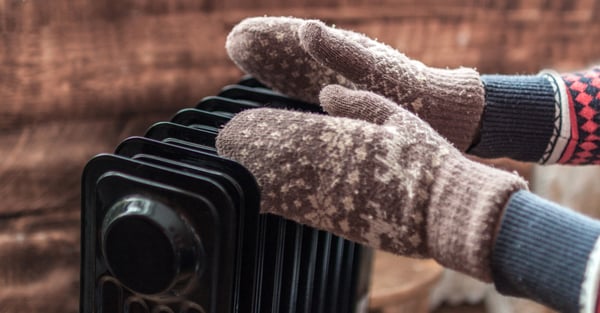How to Keep Warm at Home Without Spending Money
Keeping your home warm through the winter can be an expensive business. The colder the weather gets, the higher you turn up the heaters, resulting in a hefty heating bill. Fortunately, though, there are ways to cut back on energy consumption, keeping costs affordable. With these little tips, you can start saving straight away.

Dress warmly
It's surprising what a difference a few extra layers of clothing can make, when you're feeling chilly. The trapped air between them is warmed by your body heat, forming wrap-around insulation, so the more layers the better. Lightweight clothes, such as T-shirts and leggings, will hold the heat well inside your outer garments. An extra pair of socks and some fingerless gloves will also help, and if you're still chilly, drape a rug over your knees.
Take hot meals
A hot, filling meal will generate lasting warmth inside you, however cold your surroundings. Make the most of this bonus by taking hot meals whenever possible. If you normally have a cold snack for lunch, for instance, try some hot soup instead. You can make this easily with inexpensive root vegetables, such as potatoes, carrots and onions, adding other ingredients if you wish. Simmer them gently with some seasoning, and your warming broth will soon be ready. A dish of hot porridge or semolina will also do the trick.
Exercise
Every time you get up and walk about, you generate body heat, so set a rule for yourself to do this at least once every hour. Basic physical exercise costs nothing, and brings multiple health benefits besides warming you up, so you'll be doing yourself a favour every time. There are all sorts of simple exercises you can do indoors, such as bending, stretching and skipping, as well as physically demanding tasks, like sweeping floors and cleaning windows. Before you know it, you'll be shedding a jumper to cool off.
Reduce your living area
The larger your home, the more energy it will take to heat, unless you shrink your living area. If your accommodation is spacious, close off any rooms you can manage without, and just heat essential areas. See if you can adapt one room for multiple uses, to reduce your heat needs even more. If you normally use a study and a living room, say, let one room serve for both; if you can eat your meals in there, too, and save heating the dining room, all the better.
Keep doors and windows closed
Naturally, you'll need to open your front door sometimes, but take care to close it again promptly. Avoid doorstep conversations, during which precious, heated air can stream out and bitter currents rush in. It's also worth keeping interior doors closed, to confine your warm air to key areas. Ventilation can be reduced to a minimum on wintry days, using vents rather than windows, if available.
Stop drafts
However much you heat your home, it will still feel chilly if you have a draft running through. Freezing air may be slipping in around a poorly fitted door or window, so check your accommodation for drafts. You can seal them up effectively with rugs, cushions, old newspapers or other makeshift blockers.
Adjust thermostats to your needs
When using central heating, check your time and temperature settings. Make sure your radiators are not timed to heat up when you're out, or set to a higher temperature than you need. You can turn your heaters off completely in unoccupied parts of your home, or adjust them individually, by the day or hour, as need arises. Setting control is a simple and effective way to economise. Open hearth fires with purchased logs or coal can also be costly to use, so if you have one, feed it slowly for maximum economy.
With all these little tricks to hand, you can keep a firm grip on your heating costs this winter, while staying warm and snug. Pick your favorites from the list and they'll soon become second nature, saving you money forever more.